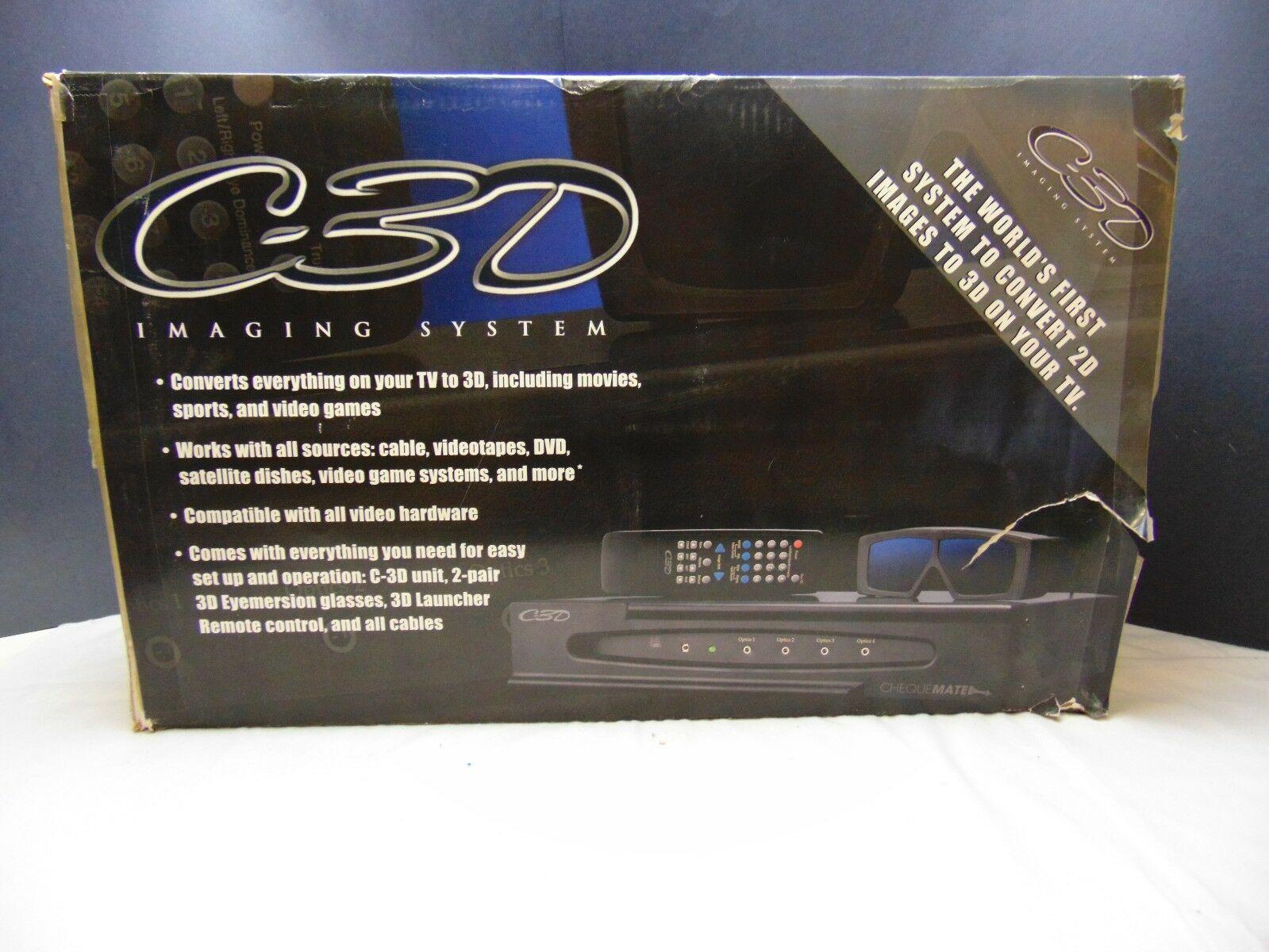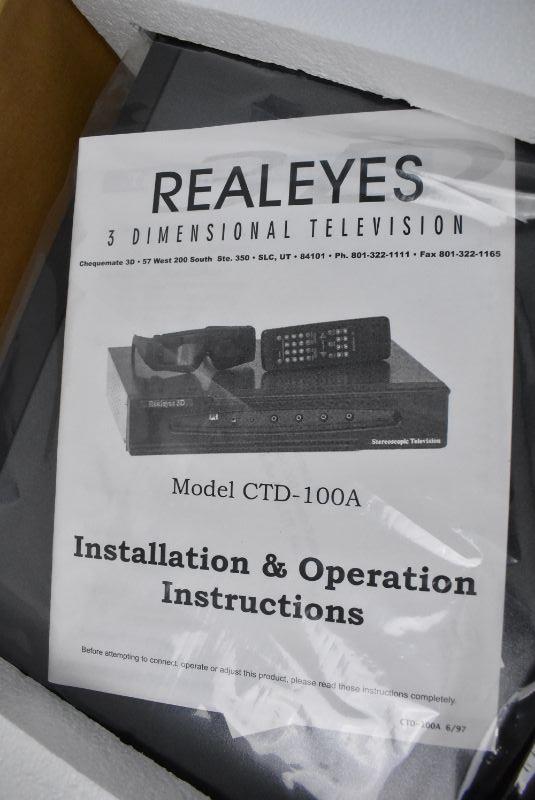ResurrectedContrarian
Suffers with mild autism
I remembered seeing ads like this in the 90s in gaming magazines:

listen to these absurd claims:
They actually existed, in some form; here's some from random listings:




So... obviously these things are going to be terrible, but what exactly were they? Did anyone try one back in the day? To be clear, i hate bad 3D conversions (like 2d films when they are auto-converted; look awful every time) but I'm very curious about this nonetheless, just as a bit of 3d gaming & TV history.
I started digging out of boredom while waiting for something to compile today, and I did find a bizarre document that is like a personal memoir of someone who worked on it, at http://www.parfaitimage.com/3D/3d_horror_part_1.html
Some excerpts:
Really bizarre read, that guy's whole document. But it also led me to search and find the original patent: https://patents.google.com/patent/EP0746949B1/en

Some fun bits in there. First, the prior method they refer to, which is about what I'd guessed; using motion in 2d video (and some memory) to guess at depth:
and a bit more on their technique:
It probably looked terrible, and I can kind of guess at what it was like despite not having seen one. It might actually work okay for just the right kind of game where the motion indicates the depth, perhaps simple arcade games with black or fixed backgrounds. But quite a hack.
Anyone ever see one of these weird artifacts of history?

listen to these absurd claims:
Connect C-3D to your TV and game system, and BAM!--images explode out of the screen while awesome visual depth sucks you right into the game's environment. Best of all, C-3D works on any video signal from any source--so if you can see it on TV, you can see it in 3D.
They actually existed, in some form; here's some from random listings:




So... obviously these things are going to be terrible, but what exactly were they? Did anyone try one back in the day? To be clear, i hate bad 3D conversions (like 2d films when they are auto-converted; look awful every time) but I'm very curious about this nonetheless, just as a bit of 3d gaming & TV history.
I started digging out of boredom while waiting for something to compile today, and I did find a bizarre document that is like a personal memoir of someone who worked on it, at http://www.parfaitimage.com/3D/3d_horror_part_1.html
Some excerpts:
In 1996, Loren Swenson visited me, a former stage magician who had started a company called
MDS which hoped to make cheap 3D simulator rides. He looked at everything I had, including the
2D to 3D conversion technology and departed with some tapes and some expensive equipment
(some of which he never paid for-a notable characteristic that caused a friend of mine to threaten to
come to his house and stand on his front lawn until he paid him.). I had shown him my simple idea
of offsetting the two fields of normal 2D video to set the image back in the TV to create a 3D effect.
He took a tape of this back to Salt Lake City and sold it to some friends for a large sum (something
like $1.5 million!). Millions more were raised from or via a financial services company named
Chequemate Intl. So far as I know, none of these persons had the slightest experience with high
tech or 3D.
I agreed to supply them with LCD shutter glasses for 3D viewing. They filed a patent on this
technique, though I think its public domain as I had been using it since the mid 80's, and proceeded
to design and build a very expensive box about the size of a VHS VCR with a TV tuner, remote
control and multiple plugs for the wired glasses. Nobody felt it necessary to ask my opinion about
any of this. The resulting box called RealEyes cost maybe $300 to make and was retailed for about
$600. I supplied about 25,000 pairs of wired LCD glasses. Wired glasses were a serious mistake
and I could easily have supplied wireless ones. I also had superior 2D to 3D conversion technology
I could have provided. Predictably, the project was a disaster and about 2 years later they went out
of business, still owing me about $40,000.
About 6 months later I got a call from J. Michael Heil who informed me Chequemate (now C3D
Digital) had raised another $10 million and hired him as the new CEO. He told me he could not see
3D as he had only one eye and that his only interest was to hold on to his stock long enough and
keep the price high enough to be able to sell it. I gave him various suggestions and said I'd be
willing to help provided they paid the $40,000 they owed me. He said fine he would and I flew to
Salt Lake for a meeting. At the meeting, I described my products and told him something of the
whole industry and its history. He said, "We need everything you have". I waited to hear and
talked to him on the phone several times but he never paid anything nor did he ever offer to
collaborate in any way.
Really bizarre read, that guy's whole document. But it also led me to search and find the original patent: https://patents.google.com/patent/EP0746949B1/en

Some fun bits in there. First, the prior method they refer to, which is about what I'd guessed; using motion in 2d video (and some memory) to guess at depth:
The efficient conversion system of the present invention can produce highly realistic, accurate, and visually-comfortable 3D video imagery in effective real-time from a single camera source
[...]
Another method of synthesizing a three-dimensional image from a two-dimensional source includes the "DeepVision" system from Delta Systems Design, Ltd. and AVS, a division of Avesco, London, England. It is believed that this system employs three mechanisms for producing a three-dimensional view from a two-dimensional video source: spatial parallax from the spatial offset of sequential video frames; a "temporal parallax" arising from the translation of motion-displaced objects from adjacent frames into spatial parallax; and a "short-term visual memory" arising from an imposed time delay between successive video frames.
and a bit more on their technique:
Two fundamental operations are performed on the incoming video data in order to encode the resulting signals for presentation of a 3D display. These operations comprise a temporal delay, typically of one frame between the image as seen by the left eye and that seen by the right eye, and a horizontal spatial shift between the images seen by each eye. These basic operations proceed in a fixed temporal sequence as indicated in FIG. 6. The sequence begins at time T1 with the acquisition of the first frame of video data, Fl by storage buffer 450. At time T2, frame Fl is copied into copy buffer 454. The sequence continues from T3 to T5 with the second frame F2 acquired and copied. At time T5, while the next input video frame F3 is being acquired, the previously acquired and stored frames, i.e., F1 and F2 are scanned out of the display buffer to a time-multiplexed display monitor 200. A spatial offset is applied to the two images as they are displayed, so that they appear horizontally displaced one from the other. Viewed through synchronous electronic glasses 300, the left eye will see one image, i.e., frame F1 with a negative spatial displacement and the right eye will see the other image, i.e., frame F2, with the opposite spatial displacement. This basic processing sequence is then repeated ad infinitum.
The spatial displacement between each image in a displayed pair of frames is approximately 0-25% of the screen width (i.e., one horizontal trace line), and preferably 10-20% of the screen width. A spatial displacement of about 15% of the screen width is preferred, calibrated to the particular size of the monitor being used. The offset may be accomplished for the left eye presentation by removing the first picture elements at the beginning of a given trace line and completing the line with black picture elements. For right eye presentation, the trace line is begun with the incorporation of black picture elements at the beginning of the trace line and the ending picture elements are removed. The same number of picture elements are removed from each trace line and for the frames for each respective eye. Similarly, the same number of black picture elements are added to each trace line and for the frames for each respective eye.
The time delay between the pair of video images displayed in each display interval can be varied, as for example by a period equal to one field delay period, two field delay periods (i.e., one frame period) or three field delay periods (1 1/2 frame periods). Varying the image-pair delay period alters the 3D effect in the view presented the viewer wearing emitter-controlled glasses 200. A longer delay increases the 3D depth effect, but may result in certain inconsistencies in the perceived images, particularly where considerable motion is present in the scene. Alternatively, a shorter inter-image delay reduces the depth effect, while providing a more consistent visual perception for moving objects.
It probably looked terrible, and I can kind of guess at what it was like despite not having seen one. It might actually work okay for just the right kind of game where the motion indicates the depth, perhaps simple arcade games with black or fixed backgrounds. But quite a hack.
Anyone ever see one of these weird artifacts of history?






